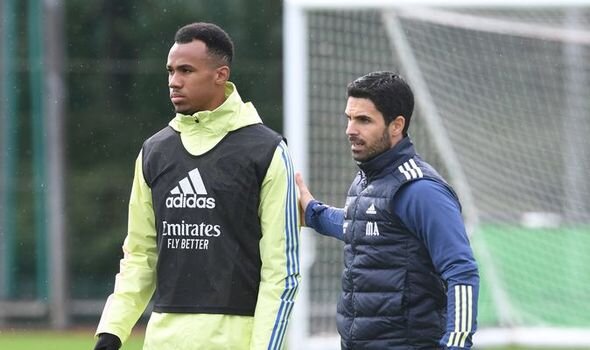Football, is constantly evolving. Tactics, soccer player roles, and strategies are always adapting to meet the demands of the modern game. One position that has seen significant changes over the years is that of the number 4 in football.
Growing up, I was captivated by the art of defending, inspired by some of the greatest center backs to ever play the game. From a coaching perspective, observing these legends live, as well as studying their techniques through videos and sports books, has been invaluable. These world-class defenders not only defined but epitomized the number 4 role in football. Icons like Franz Beckenbauer, Rio Ferdinand, John Terry, Paolo Maldini, Franco Baresi, Alessandro Nesta, Ronald Koeman, Fabio Cannavaro, Carles Puyol, Fernando Hierro, and Giorgio Chiellini each left an indelible mark on the sport.
The mastery of these top class defenders defensive skills, tactical intelligence, and leadership provided crucial lessons on the importance of positioning, anticipation, and communication. Watching them taught me the nuances of organizing a defense, the significance of reading the game, and the balance between strength and composure. Their careers have profoundly shaped my understanding and coaching approach to developing the next generation of center backs.
This article will get into the basics of playing as a number 4 in football, exploring the skill sets, tactical responsibilities, and the impact of modern football trends on this crucial defensive role.
Disclosure: Please note that some of the links below area affiliate links and at no additional cost to you I will earn a commission. Know that i only recommend products services and brands i have personally used and stand behind. When you use one of my affiliate links, the company compensates me, which helps me run this blog and keep my in -depth content free of change for readers (like you). Read our disclosure for more info.
Table of Contents
The Number 4 in Football
The center back, traditionally known for their defensive solidity and aerial prowess, has become a more dynamic and versatile position in modern football. The number 4 in football, typically a central figure in the defensive line, must now combine traditional defensive skills with modern-day demands such as ball-playing abilities and tactical awareness. The future of the center back role promises further evolution as football continues to progress.

Evolution of the Center Back Position
Traditional Responsibilities
Historically, the primary role of a center back was clear: defend the goal at all costs. This involved strong tackling, winning aerial duels, and maintaining a solid defensive line. The number 4 in football was often the more physically dominant of the central defenders, tasked with marking the opposition’s most dangerous attackers and clearing the ball from dangerous areas.
Modern Requirements
The modern game, however, has expanded the responsibilities of the number 4 in football and it is no longer just a squad number. Today, any head coach will ask from a center back not only to excel defensively but also to contribute to the team’s build-up play. This shift has been driven by several factors:
- Playing out from the back: Modern football emphasizes possession-based play, requiring center backs to be comfortable with the ball at their feet, initiating attacks from deep positions.
- High defensive lines: Teams now often employ higher defensive lines, necessitating greater pace and positional awareness from center backs to cover spaces left behind.
- Versatility: Center backs are expected to adapt to various formations and tactical systems, whether playing in a back three or a traditional back four.
Required Skill Sets
As football continues to evolve, the skill sets required for a number 4 in football further expand. Here are some key attributes that defines the modern center back:
Technical Proficiency
- Ball-playing ability: Center backs needs to be skillful at passing, both short and long. They must be able to break the opposition’s lines with accurate passes and switch the play effectively.
- Dribbling under pressure: With pressing becoming more intense, center backs should have the composure and skill to dribble past oncoming attackers and overload the center of the pitch. This will attack pressure, move opponents from their positions and will free spaces higher up the pitch.

Tactical Intelligence
- Positioning: Advanced tactical understanding will be crucial. Center backs must read the game well, anticipate opponents’ movements, and position themselves to intercept passes and block shots.
- Communication: Leading the defensive line requires constant communication with teammates. Center backs must organize the defense, ensuring everyone is in the right position and aware of their responsibilities.
Physical Attributes
- Speed and agility: As defensive lines push higher up the pitch, the modern number 4 in football must be quick and agile to recover and track back against fast attackers.
- Strength and aerial ability: Despite the evolution in other areas, traditional defensive qualities like strength and aerial prowess will remain essential, especially for dealing with set-pieces and physical forwards.
Tactical Innovations Impacting the Central Defender Role
The tactical landscape of football coaching is continuously evolving, and several trends are shaping the future role of the number 4 in football.
Positional Play and Ball Circulation
Positional play, popularized by coaches like Pep Guardiola who conquered the Premier League the last 7 years, Mikel Arteta and Roberto De Zerbi and their coaching staff emphasizes maintaining specific soccer positions on the pitch to create numerical advantages and facilitate ball circulation. Center backs in such systems are crucial for:
- Initiating attacks: They often start the build-up play, requiring excellent passing range and vision.
- Creating superiorities: One of the main pillars of Positional Play is the creation and exploitation of different types of superiorities. Frequently, the center backs are responsible for creating numerical superiorities in the center of the pitch by advancing either with or without the ball.
- Ball possession: Maintaining possession under pressure, switching the play to exploit spaces on the field. The center backs are responsible for creating triangles and rhombus with the full backs and the midfield players offering multiple passing options.

High Press and Counter-Press
Teams now employ aggressive pressing and counter-pressing tactics to regain possession quickly. This has several implications for center backs:
- Quick decision-making: Under intense pressure, center backs must make rapid decisions to avoid losing the ball in dangerous areas.
- Ball recovery: They must be adept at winning the ball back immediately after losing it, often requiring good tackling and interception skills.
Three-at-the-Back Formations
The rebirth of 3-at-the-back formations has altered the dynamics of the center back role. In such systems:
- Versatility: Center backs must be comfortable playing in wider positions, almost as full-backs.
- Cover and support: With an additional center back, they need to provide cover and support for each other, ensuring solidity while allowing for more adventurous wing-back play.
Elite Center backs
To understand the significant role the number 4 in football, let’s look at some current players who epitomize the modern requirements of this position. The new era, requires from center backs to have a mixture of the physicality of Patrick Vieira, the passing ability of David Beckham, the long ball of Trent Alexander Arnold and the endurance and driving of Steven Gerrard.
The general idea is to have a combination of the defending skills of a traditional defender, the ball control skills of a central midfielder and the player personnel of a captain.
Virgil van Dijk (Liverpool)
- Technical skills: Van Dijk’s passing accuracy and ability to play out from the back make him a linchpin in Liverpool’s build-up play.
- Physical presence: His aerial dominance and physicality are crucial for dealing with set-pieces and physical strikers.
- Leadership: Van Dijk is a vocal leader, organizing the defense and ensuring tactical discipline.
Ruben Dias (Manchester City)
- Positional intelligence: Dias excels in reading the game and positioning himself to intercept passes and block shots.
- Ball-playing ability: He is comfortable on the ball, initiating attacks with precise passes and maintaining composure under pressure.
- Adaptability: Dias has seamlessly adapted to different tactical systems, showcasing his versatility.
Matthijs de Ligt (Bayern Munich)
- Youthful energy: De Ligt combines physicality with a mature understanding of the game, despite his young age.
- Ball progression: He is adept at carrying the ball forward and breaking lines with his dribbling and passing.
- Defensive solidity: De Ligt’s tackling and aerial ability make him a formidable defender in both domestic and international competitions.

· William Saliba (Arsenal)
- Technical skills: Possesses excellent ball-playing abilities, initiating Arsenal’s build-up play with precise passes and intelligent distribution.
- Tactical awareness: Demonstrates remarkable intelligence, reading the game well and positioning effectively to intercept passes and nullify attacks.
- Physical attributes: Combines technical prowess with strength and aerial ability, making him formidable in defense, particularly during set-pieces.
· Antonio Rüdiger (Real Madrid)
- Positional intelligence: Understands the game, often anticipating opponents’ movements and positioning to face out threats.
- Leadership: Vocal presence on the pitch, organizing the defense and ensuring tactical discipline.
- Physicality: Known for robust defending, combines strength with agility to match up against different types of forwards.
· John Stones (Manchester City)
- Ball-playing ability: Composed on the ball, starts attacks from the back with accurate passes and fast dribble with the ball.
- Tactical awareness: Reads the game well, positioning strategically to intercept passes and maintain defensive solidity.
- Versatility: Excels in possession-based systems, demonstrating ability to thrive in different tactical setups. He showed a huge versatility when he was used in a “false center back” position in mainly during the last games of the season 2022 – 2023.
Other elite center backs former central defender of Real Madrid and World Cup winner with Spain Sergio Ramos, Raphaël Varane who played for Manchester United until Summer 2024, and Theo Hernández, the AC Milan and National Team of France center back.
ELITE ACADEMY COACHING – THE SECRETS BEHIND THE DEVELOPMENT PROGRAM FOR PEP GUARDIOLA’S METHODOLOGY

The Secrets Behind the Development Program for Pep Guardiola’s Methodology
- Build-up Phase 1: Short Build-up Play from the GK
- Build-up Phase 2: Midfield Combination Play
- Build-up Phase 3: Finishing the Attack (Final Third)
- Defending Around the Box
- Play Your Position (the ball comes to you, don’t go to the ball)
- Short Build-up Play from the GK with Full Backs Pushed Up
- Possession with a Purpose – Create Overloads + Break Lines
- Control to Create Opportunities to Score
- Play Through the Centre (Penetration) and Wide (Crossing)
- Aggressive High Press to Win Possession Quickly or Force Mistakes
- Create Numerical Superiority in All Transition Moments in the Game
Adapting to Challenges
As football continues to evolve, center backs will face new challenges that will require continuous adaptation and development.
- Speed and agility training: Center backs must work on their speed and agility to cope with fast and technical forwards who can exploit high defensive lines.
- Tactical awareness: Understanding opponents’ playing styles and anticipating their movements will be crucial for effective defending.
- Positional discipline: While contributing to the build-up play, center backs must maintain their defensive responsibilities, ensuring they are not caught out of position.
- Stamina and fitness: The increased physical demands of modern football require center backs to be in peak physical condition, capable of maintaining high performance levels throughout the game.
- Composure under pressure: Center backs must remain calm and composed when pressed, making the right decisions to retain possession.
- Quick ball circulation: Effective passing and movement are essential to bypass the press and exploit spaces left by the opposition.
Conclusion
The future of playing as a number 4 in football is exciting and dynamic. The role has evolved from a purely defensive position to one that demands technical proficiency, tactical intelligence, and physical attributes. As football continues to progress, center backs will need to adapt to new tactical innovations, leverage advancements in technology and data analysis, and continuously develop their skills to meet the challenges of the modern game.
The number 4 in football will remain a cornerstone of any successful team, providing the foundation for both defensive solidity and attacking fluidity. Aspiring center backs must embrace the evolving demands of the role, combining traditional defensive qualities with modern-day requirements to excel in the ever-changing landscape of football.

